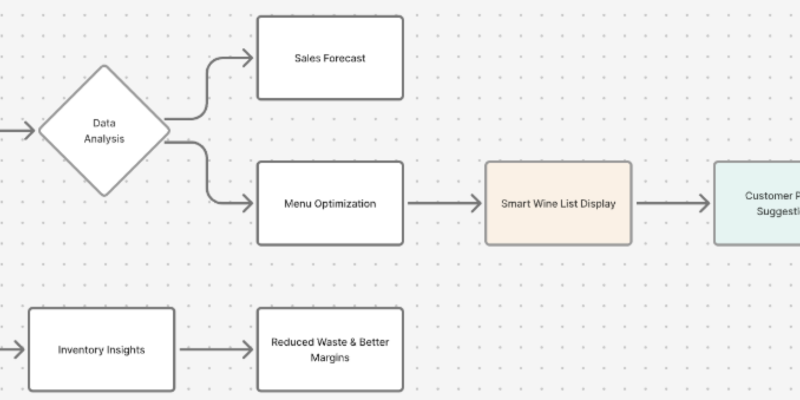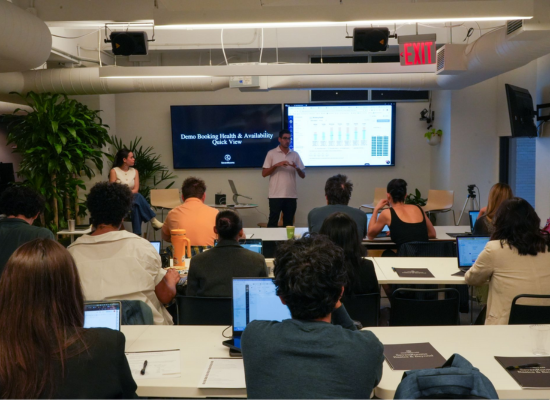Educating Sommeliers Worldwide.
By Beverage Trade Network

For decades, wine lists were curated primarily through intuition, tasting experience, and supplier relationships. Today, that art is being enhanced by science. Artificial intelligence (AI) and data analytics are now quietly reshaping how sommeliers build wine menus, manage inventory, and forecast sales.
Restaurants and wine programs across the world are integrating AI-driven insights to understand guest behavior, predict demand by the glass, and even optimize the layout of wine lists for higher conversions. What used to be a “gut feeling” is now being supported by real-time sales data, guest preferences, and trend analysis.
AI models trained on past sales data, guest demographics, and even seasonality can forecast which wines are likely to perform well in the coming weeks or months.
For example, data might reveal that Albariño and Grüner Veltliner spike in summer months, while Cabernet-heavy sales dominate during holidays. This helps sommeliers anticipate demand, negotiate allocations in advance, and adjust BTG (by-the-glass) pricing dynamically.
Some restaurant groups now use predictive analytics platforms like BinWise or SevenRooms Insights to align their procurement with upcoming trends—reducing stockouts and minimizing over-ordering. The result: higher profitability and fresher, more relevant menus.

SevenRooms does Masterclasses to bring hospitality teams together for hands-on learning, pro tips, and platform know-how.
AI doesn’t just help decide what to stock—it helps decide how to present it. Using menu-engineering analytics, sommeliers can test how design, positioning, and language influence customer choices.
For instance:
- Highlighting a “Sommelier’s Pick” section often increases sales velocity by 20–30%.
- Eye-tracking data shows that guests gravitate to the top-right and middle sections of printed wine lists.
- Dynamic digital menus can update in real time based on remaining inventory or weather (think: “Rosé Recommendations for a Sunny Afternoon”).
At Restaurant in London, the beverage team recently introduced a data-linked digital wine list that recommends pairings based on a diner’s entrée. The system learns from order history—if guests who order lamb often choose Rioja, it automatically prompts a similar suggestion.
The sommelier’s role evolves from a static list curator to a live interpreter of data-backed flavor experiences.
Inventory management is one of the toughest balancing acts in any wine program. AI can monitor depletion rates, sales cycles, and spoilage risks to recommend reorder timing and volume.
Tools like Ingest AI, WineDirect Insights, or Toast Analytics can now integrate POS data, distributor deliveries, and cellar management systems to forecast inventory turnover precisely.
A mid-sized restaurant might learn that certain BTG wines turn over faster on Friday nights, while reserve bottles move mainly during tasting-menu weekends. Over time, these micro-patterns save thousands of dollars in holding costs and reduce waste.
The most successful sommeliers of the next decade will combine traditional tasting skills with analytical fluency. Understanding wine psychology, pricing elasticity, and digital data dashboards will become as valuable as mastering blind tasting.
AI can’t taste terroir, but it can predict trends. It can’t replace the personal touch of a sommelier, but it can enhance their decision-making precision. The real advantage lies in blending human hospitality with machine intelligence—a perfect pairing for modern wine programs.
[[relatedPurchasesItems-61]]
- Data-driven lists outperform intuition-only lists in sales velocity and profitability.
- Predictive analytics tools help forecast demand and optimize inventory.
- Dynamic menus and digital wine lists can personalize experiences in real time.
- AI doesn’t replace sommeliers—it augments them, freeing time for guest interaction and storytelling.
Also Read:
How Top Sommeliers Boost Beverage Sales And Enhance Guest Experiences
Mastering the Art of Wine Flights: A Guide to Curating Engaging Tasting Experiences
Enhancing Wine Sales Through Strategic Design